Type of Trees
Bonsai are largely categorized into two groups; shohaku and zoki, according to the type of tree. Also, they are referred to by different terms determined by their styles, such as by the number of trunks they have or by the direction that the tree is growing in.
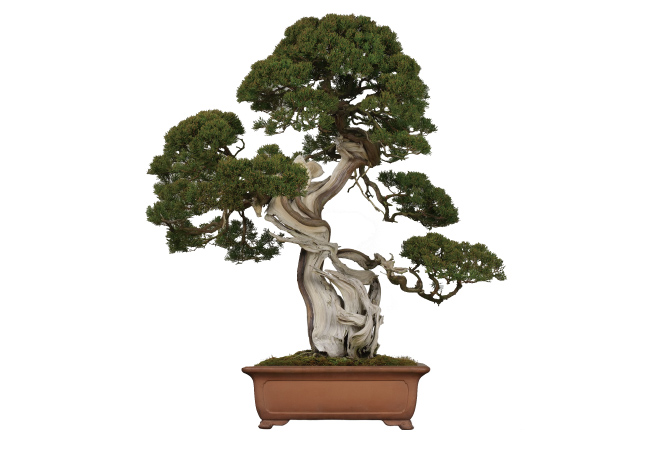
Japanese Juniper
-
Shohaku Bonsai
Conifers, with their deep green needles, rank as the prototypical bonsai. Especially beloved are the pines and junipers, together called shohaku. Shohaku roots and trunks, in their great vitality, display their beauty of form in a variety of ways.
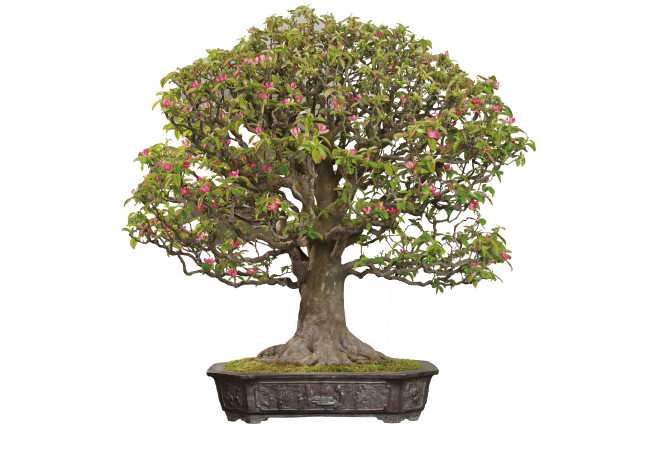
Chinese Quince
-
Zoki Bonsai
Zoki, in contrast to shohaku, display a variety of changes with the progression of the seasons. Viewing points vary by the species; Japanese maple and trident maple are well known for how their leaves change color in autumn, while others, such as wisteria and azalea, called hana-mono bonsai, are enjoyed for their flowers. There are also mi-mono bonsai, such as the Japanese quince, which bear fruit.
Shape of trees
Chokkan and Moyo-gi
Chokkan, or formal upright, with a single upright trunk, is one of the basic styles of bonsai. Alongside chokkan trees, moyo-gi (also known as informal upright) trees, with their varied trunk forms, make up the most archetypal bonsai shapes. There are also other styles such as shakan (slanted trunk), sokan (twin trunks), and sankan (triple trunk).
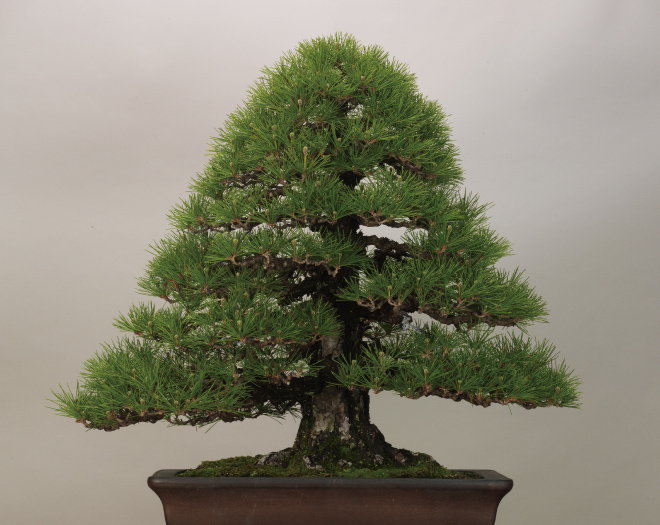
-
Chokkan Style Japanese Black Pine
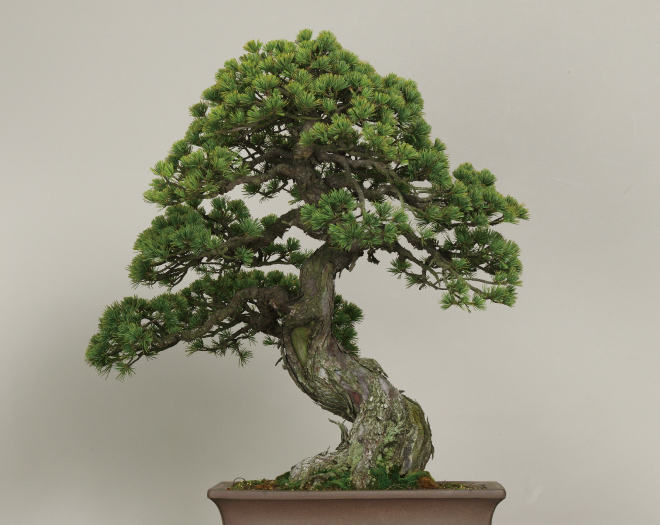
-
Moyo-gi Style Japanese White Pine
Fukinagashi and Kengai
These bonsai are meant to display the image of a tree persevering against the severity of nature. Fukinagashi, or windswept, is a style of bonsai with the trunk growing out at an angle, to illustrate a tree being blown and tossed about in a strong wind. Kengai, or cascade, is also a form of bonsai with its distinctive feature being that it depicts a tree hanging down from a sheer cliff.
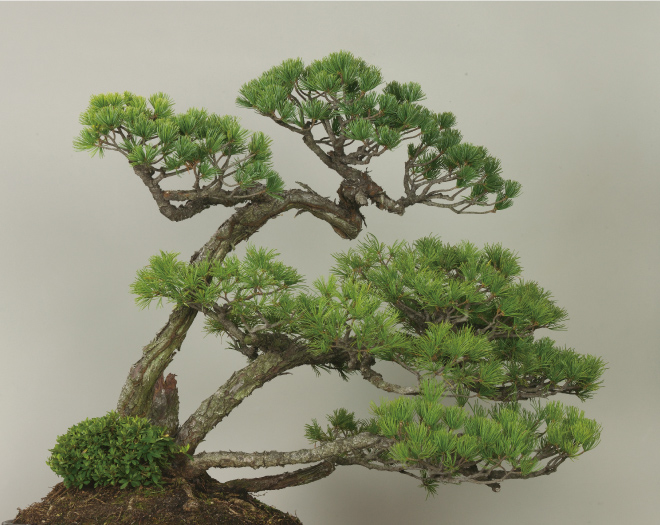
-
Fukinagashi Style Japanese White Pine
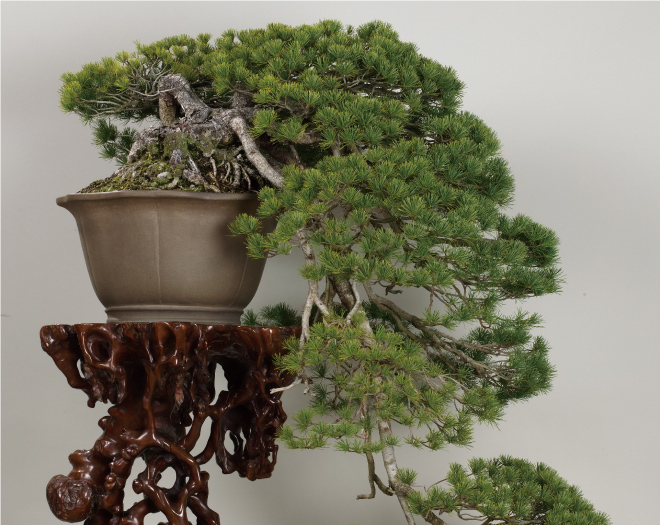
-
Kengai Style Japanese White Pine
Ne-tsuranari and Yose-ue
Ne-tsuranari is a form of bonsai that displays multiple trunks sprouting from a single root base, appearing huddled together. Yoseue, or group planting, are made to depict a graceful forest vista.
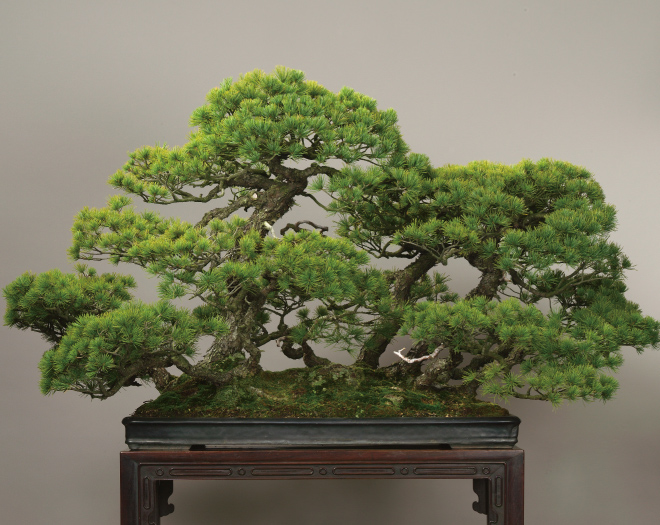
-
Ne-tsuranari Style Japanese White Pine
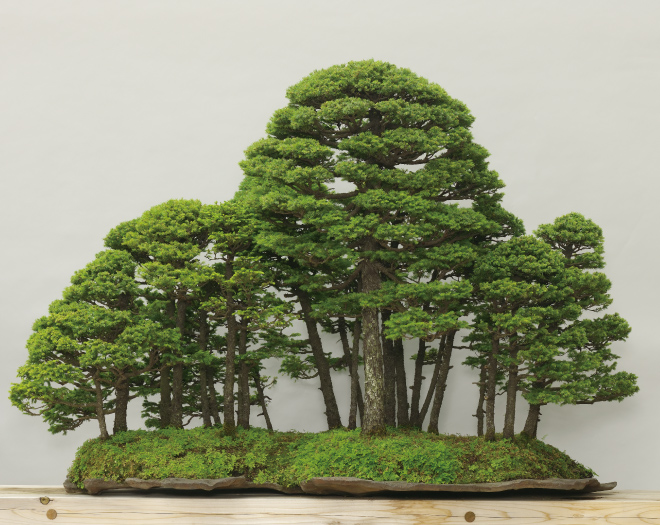
-
Yose-ue Style Ezo Spruce



